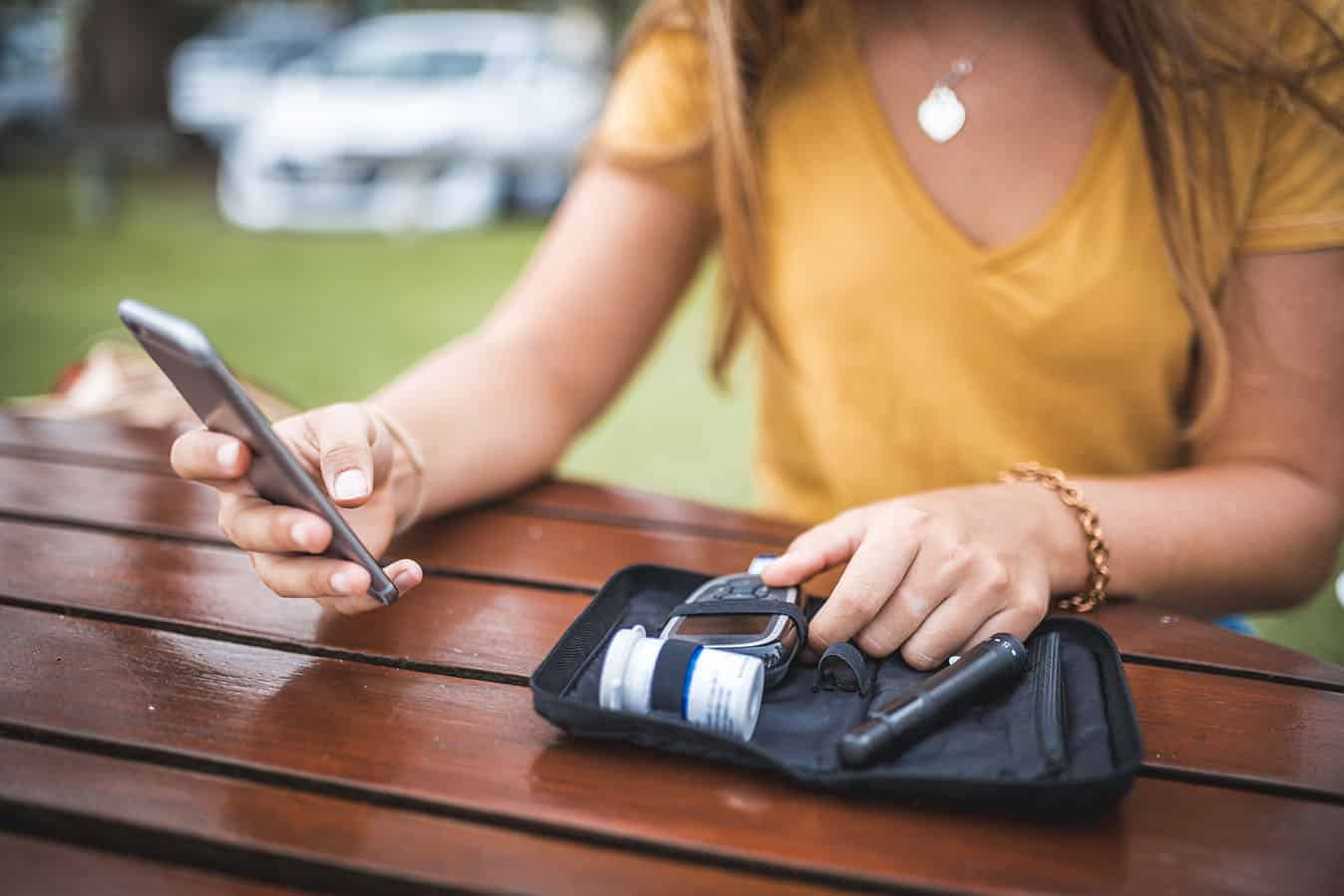Never before have we seen such a rapid change in the way we practice diabetes education and management. This is a perspective from a nurse practitioner led clinic in South Australia.
During March 2020, face to face consults became challenging for reasons that were unforeseen and unexpected. COVID-19 changed the way we provide Diabetes management in private practice in a matter of days when the Australian government introduced temporary telehealth Medicare Benefits Schedule (MBS) item numbers. New temporary MBS telehealth items are available to help reduce the risk of community transmission of COVID-19 and provide protection for patients and healthcare providers (Department of Human Services, 2020). Prior to COVID-19, telehealth for nurse practitioners was underutilised for several reasons including:
- Restrictions in MBS funding. Telehealth MBS item numbers were only available outside of major cities for nurse practitioners. The specific requirements included to be in an eligible geographical area or eligible Residential Aged Care Facility (RACF) or eligible Aboriginal Medical Service (Australian Nursing Federation 2013.)
- Confusion on the best and safest platform to use. Safety, training and privacy factors need to be considered as well as a continuation of care coordination.
- Need for additional administration support including the set up and education to clients on how to use the available technology. The technology considerations depend on the size of the practice and the frequency of the service.
- Internet connectivity in rural areas has been problematic.
- Available time and need to transform a practice to a virtual clinic. Clinicians in primary healthcare are increasingly busy due to many factors including an ageing population, rising levels of risk factors such as obesity and the increasing prevalence of chronic illness (Australian Institute of Health and Welfare 2014).
- Inability to charge a gap. The MBS item numbers are limited, and many clinicians need to charge a gap to ensure business viability.
The number of nurse practitioner telehealth item numbers utilised between the fi nancial year of July to June 2019 was 293 in total nationally. Clearly an underutilised service (Department of Human Services 2020).
WHAT WERE THE CHALLENGES OF THE PROGRESSION TO TELEHEALTH?
- Negotiating a rapid change;
- Prioritising vulnerable clients especially clients suff ering from mental health issues and acute complications such as wound care requirement;
- Lack of essential data-having access to latest pathology results due to an inability for testing;
- Lack of IT training/skills and equipment (both from a practitioner and client aspect); and
- Lack of knowledge in available online resources. For instance, what videos are available that will assist in the education of insulin administration?
What educational resource materials are needed?
SURPRISING ASPECTS OF INTRODUCING TELEHEALTH AND MOVING TO A VIRTUAL DIABETES MANAGEMENT AND EDUCATION CLINIC
Most telehealth appointments were/are conducted without the use of video. For example, via telephone only. This presented issues in establishing a rapport due to the loss of nonverbal cues in communication, particularly in relation to new clients.
The number of ‘no shows’ or clients not presenting to the appointments in the clinic halved. Prior to COVID-19 non a_ ended appointments averaged 15%. During the month of April, nonattendance decreased to 1%. Clients were more likely to attend a telehealth consult rather than a face to face consult. This could be related to the convenience of not needing to travel or the need to ‘reach out’ to a health professional during times of forced isolation. Several clients commented that the telehealth consult relieved their anxiety and they felt a sense of safety at having a health professional available on the end of the telephone if needed.
Clients embraced this technology and the amount of appointments normally seen each day did not decrease in any way during April. In fact, the client list increased as clients previously seen in a rural clinic started making appointments again due to the convenience of a virtual clinic with no need to travel several kilometres to attend.
All in all, a virtual clinic has transformed diabetes management and the question remains: Could this be the new norm?
When practitioners are over the initial shock of COVID-19, we can reflect on this time to ask how we can deliver care in improved ways. We will discover that we were the ones that failed to embrace telehealth. Our patients are ready – and the world is ready. Healthcare will never be the same again.
References
Australian Institute of Health and Welfare, 2014 Primary Healthcare in Australia aihw.gov.au/getmedia/1918d07de913-4e31-8325-1f496833d775/8_3-primary-health-care.pdf.aspx. Accessed 1 May 2020
Australian Nursing Federation, 2013 Guidelines for telehealth on-line video consultation funded through Medicare. anmf.org.au/documents/reports/Telehealth Guidelines.pdf Accessed 1 May 2020
Department of Human Services (2020) Medicare group reports medicarestatistics.humanservices.gov.au/statistics/mbs_group.jsp Accessed 29 April
Department of Human Services (2020) Covid-19 Temporary MBS Telehealth Services: Nurse Practitioners mbsonline.gov.au/internet/mbsonline/publishing.nsf/Content/Factsheet-TempBB Accessed 19 April
Author
Toni Slotnes-O’Brien MNP, RN CDE, BAppSci, Grad Cert Diab. Edn is a Credentialed Diabetes Educator-Nurse Practitioner and Clinical specialist lecturer Flinders University, Health2Go Primary Healthcare clinic Flinders University.








